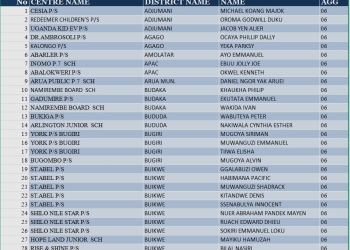
Norman Frankel, Chief Growth Officer, Stanchion Payments Solutions
I had the pleasure of growing up in Kenya in the 1970s, so every time I return, it always feels special. The city, Nairobi, has, of course, changed a lot and when I send photos back to the office some in the team remark that it looks like Las Vegas at night.
In many markets that I get to travel to, the banks are desperately keen to drive digital experiences in the issuing and acquiring space. The same ambitions lie with the Kenyan banks – at least in words – but when it comes to action, it is always M-Pesa, other mobile money operators and fintechs that are driving the digitalisation agenda of payments locally.
The banks are increasingly having to slug it out over a small market share, which, in broad terms, is declining mainly because others are innovating first and staying customer relevant. Where the banks should have been tokenising their cards first or offering virtual card issuance, the one that launched the proposition first was M-Pesa.
M-Pesa’s influence on the card-issuing market in Kenya is profound, driving changes in consumer behaviour, fostering competition and promoting innovations that integrate mobile money with traditional banking products.
Nairobi is a hotbed of fintech; last year it saw by far the greatest amount of funding in Africa going to its start-ups. Conference organisers have jumped on the bandwagon. It feels that every other month there is a new payments conference being organised in Nairobi.
The city itself, with five million people, is almost on a par with Addis Ababa and Cape Town and ranks about the 11th most populous in Africa, whilst the country’s total population of around 57 million makes it the 7th largest by population.
Kenya Vision 2030
Kenya’s economy is on a transformative journey. Central to this is Kenya Vision 2030, a comprehensive development blueprint launched in 2008, which seeks to elevate the country into a newly industrialised, middle-income nation. The vision aims for an average GDP growth rate of 10% per annum and focuses on three main pillars: economic, social and political development. Heading into the final phases – and leaving the blip of the pandemic years out of the equation – Kenya has managed to achieve rapid double digit annual growth.
The main flagship projects under Kenya Vision 2030 are aimed at stimulating job creation among Micro, Small and Medium Enterprises, whilst driving a digital economy by expanding access to technology and fostering innovation. Key themes include:
1. Infrastructure Development and Energy Sector Initiatives.
ü Standard Gauge Railway: to enhance major city connectivity, facilitating trade and travel.
ü Road Network Expansion: Over 10,000km of roads enhancing accessibility and economic integration across the country and various bypasses around Nairobi.
ü Mass Transit Systems: Development of rapid bus transport networks and light rail systems in major urban areas to ease congestion and improve public transport.
ü Geothermal Power Development: aims to harness renewable energy sources, reducing dependence on fossil fuels and enhancing energy security.
ü Wind Energy Projects: developing wind farms to diversify the energy mix.
2. Manufacturing and Industrialisation
ü Special Economic Zones: to attract foreign investment and promote manufacturing activities, particularly in textiles and leather production.
ü Industrial Cluster Hubs: for specific sectors, such as the Athi River Textile Hub, aimed at fostering local production and job creation.
3. Healthcare Initiatives
ü Universal Health Coverage: to provide accessible healthcare services to all Kenyans, it includes building new health facilities and improving existing ones.
ü Health Infrastructure Expansion: Construction of hospitals and clinics across the country to enhance healthcare delivery.
4. Affordable Housing: by addressing urban housing shortages through public-private partnerships.
5. Agricultural Transformation: Enhancing productivity and sustainability in agriculture and food security to improve agricultural productivity through modern farming techniques, irrigation projects and support for smallholding farmers.
6. Education and Training: to build new secondary schools and vocational training centres to improve educational access and quality and hiring additional teachers to ensure adequate staffing in schools.
The Capital City Powers the Economic Engine
Nairobi is not only the political centre but also the financial heartbeat of East Africa. The establishment of the Nairobi International Financial Centre (NIFC) attracts both domestic and international investments, enhancing Nairobi’s position as a regional financial hub. Backed by Strathmore University with its academic prowess and Innovation Labs, the city is already an attractive destination for businesses and investors alike.
The main sectors fuelling Nairobi’s economic expansion are:
1. Information and Communication Technology (ICT): Nairobi is often referred to as “Silicon Savannah” owing to its vibrant tech ecosystem. The ICT sector has seen rapid growth, with numerous start-ups and global giants like IBM and Microsoft, setting up operations in the city.
2. Financial Services: remain a cornerstone of Nairobi’s economy, with a concentration of banks, insurance companies and investment firms.
3. Real Estate and Construction: both are booming, driven by urbanisation and a growing middle class. There is significant investment in residential, commercial and mixed-use developments. Major projects include shopping malls, office parks and housing estates catering to the increasing demand for modern living and working spaces.
4. Manufacturing: While contributing a smaller percentage to GDP compared to other sectors, initiatives include food processing, textiles and consumer goods manufacturing.
5. Tourism: Nairobi is a key gateway for tourists visiting Kenya’s national parks and wildlife reserves. The city offers a mix of cultural experiences, wildlife attractions and business tourism facilities. Investment in hospitality infrastructure continues to grow, supporting the tourism sector’s recovery post-pandemic.
6. Healthcare: is experiencing significant growth, with both public and private investments aimed at improving service delivery. Nairobi attracts patients from across East Africa seeking specialised medical care owing to its advanced healthcare facilities.
7. Renewable Energy: with an increasing focus on sustainability.
The Current Banking Market and Trends in Card Issuing and Merchant Acquiring
As of 2025, Kenya’s 46 commercial banks, despite lagging in payment innovation to others, remain robust. Major players include Equity Bank, Kenya Commercial Bank, and NCBA Bank, which dominate the market.
Given the ever-present competition from M-Pesa, the banks seek to differentiate by enhancing customer experience through their digital banking solutions and personalised services, whilst continuing to streamline operations and reduce costs. Other actions being taken include:
v Enhanced Digital Services: Offering comprehensive easy-to-use mobile banking solutions.
v Fintech Partnerships: to integrate advanced payment technologies into their services.
v Customer Education: Promoting financial literacy to encourage customers to utilise a broader range of banking services beyond mobile money.
Card Issuing
However, the banks still have a lifeline as they continue to benefit from the fast economic and population growth. The key trends are still positive with an upward trend in debit and credit card usage as consumers shift towards cashless transactions and banks launch new products that cater to various demographics, including youth-focused cards with unique benefits. Some of the trends include:
ü Rapid Growth of Prepaid Cards: Driven by consumer demand, banks and retailers are launching various prepaid card options.
ü Contactless Payments: Rising fast with many newly issued cards having tap-to-pay capabilities.
ü Increased Issuance of Debit and Credit Cards: As more consumers embrace banking services, the issuance of debit and credit cards is on the rise. Financial institutions are focusing on enhancing customer experience through innovative and digital card features and rewards programmes.
ü Integration with Mobile Platforms: Card issuers are increasingly integrating their products with mobile payment platforms, allowing users to link their cards to mobile wallets for seamless transactions. This integration supports the growing trend of digital banking among younger consumers.
Of the above, it is the prepaid card growth that is evolving the fastest. The key developments being:
1. Strong Market Growth: The prepaid card and digital wallet sectors in Kenya had a compound annual growth rate (CAGR) of 16.5% from 2019 to 2023. This growth is projected to accelerate to 18.9% through to 2028, with the market expected to expand from US$1.70 billion in 2023 to US$4.12 billion by 2028.
2. Diverse Product Offerings: The market is witnessing an increase in various prepaid card types, including: Open Loop Prepaid Cards; Closed Loop Cards issued for specific purposes like travel or meal allowances and Virtual Prepaid Cards especially among younger consumers for online transactions.
3. Consumer Engagement and Spending Patterns are moving to everyday prepaid card usage across multiple demographic groups, whilst mobile wallets and contactless payment options are enhancing user experience and encouraging more consumer adoption.
4. Increased Competition from a greater number of parties, including traditional banks leading to better product offerings, such as multi-currency prepaid cards introduced by KCB Bank and Mastercard.
5. Focus on Financial Inclusion for the underbanked by providing access to financial services without the need for traditional bank accounts, making them an attractive option for many.
Merchant Acquiring
Merchant volumes accepting card payments are also increasing rapidly, driven by technological advancements, consumer demand for convenience, and fintech collaborations help to integrate payment solutions to support both online and offline transactions. Key trends are:
ü Shift to Cashless Transactions: showing a marked increase.
ü Diverse Payment Options: Merchants are expanding their payment acceptance methods to include mobile wallets, QR code payments and other alternative payment methods.
ü Evolving POS acceptance: point-of-sale (POS) systems that accept multiple payment types, including contactless payments, are becoming standard.
ü E-commerce explosion: is pushing merchants to enhance their online payment capabilities with many investing in secure online payment gateways.
Despite positive trends, challenges remain in both card issuing and merchant acquiring
Infrastructure Issues: with frequent outages, unreliable and slow network connectivity impacting transaction processing, particularly for acquirers. Continuous downtime in Kenya affects customer trust and operational efficiency.
Fraud Concerns: The rise in digital transactions has led to increased fraud. Lenient penalties for fraudsters and inadequate enforcement of regulations contribute to a challenging environment. There is a need for stronger legal frameworks to mitigate fraud effectively.
Need for Collaboration: to address common challenges within the card ecosystem, such as high operational costs and regulatory compliance issues.
Specifically for bank-card issuers; they also face several challenges that are hindering the growth and efficiency of their operations. The main ones being:
1. Non-Conducive Operating Environment: with the regulatory environment often not favourable for card issuers such as high taxation on card production, for example, a 25% duty on white plastic making local production less competitive compared to international firms.
2. High Operational Costs: for investing in card technology and infrastructure are substantial. This is exacerbated by the lack of sufficient local investment from service providers, making it challenging for banks to maintain profitability in their card operations.
3. Knowledge Gaps: in the card ecosystem among various stakeholders, can lead to incorrect valuations, resulting in punitive taxation and inadequate responses to fraud cases.
4. Limited Consumer Awareness: where many are still unaware of the full benefits and functionalities of prepaid and credit cards, primarily viewing them as tools for withdrawing cash rather than for making purchases.
5. Competition from dominant Alternative Payment Methods: As many consumers prefer these owing to their convenience, this leads to slower growth in card usage. As stated earlier, M-Pesa significantly influences the card-issuing market in Kenya in the following ways:
1. Promotion of Financial Inclusion: M-Pesa has played a crucial role in enhancing financial inclusion in Kenya, increasing access to financial services by up to 82.9% by 2019. This expanded access brought more customers into the formal financial system, leading to increased demand for banking products, including cards. As more people become financially literate and engaged with digital payments, they are more likely to adopt debit and credit cards alongside their M-Pesa accounts.
2. Shift in Consumer Preferences: The M-Pesa convenience and accessibility have shifted preferences towards cashless transactions. Many users view M-Pesa as a primary means of conducting financial transactions, which can limit the growth of traditional card usage. However, as M-Pesa integrates with card services (such as its partnership with Visa for virtual cards), it creates a hybrid model.
3. Competition and Collaboration: Banks are increasingly collaborating with M-Pesa to provide integrated services that combine mobile money with traditional banking products. For instance, M-Pesa has enabled users to link their bank accounts and access credit facilities through its platform, which indirectly promotes card usage as part of a broader financial services package.
4. Impact on Merchant Acquiring: M-Pesa transformed the landscape by providing merchants with an easy way of accepting payments without the need for traditional card infrastructure. This led to a rise in cashless transactions at retail points. The low M-Pesa transaction fees also pressure banks to reconsider their fee structures for card transactions.
5. Technological Integration: The introduction of features like virtual cards linked directly to M-Pesa accounts allows users to make online purchases seamlessly, thereby bridging the gap between mobile money and traditional card payments.
Powering Kenya’s Payments Evolution with Stanchion
Kenya’s payments ecosystem is at a pivotal moment. While mobile money, led by M-Pesa, has revolutionised financial inclusion, banks now face a stark reality: their traditional dominance is fading, and survival depends on bold, technology-driven transformation. To compete in a mobile-first future, financial institutions must rethink their strategies—moving beyond legacy systems to embrace agile, interoperable digital payment solutions.
This is where Stanchion’s Payment Fabric provides a critical advantage. Our modular and adaptive technology bridges the gap between legacy banking infrastructure and next-generation digital payment experiences. By enabling seamless integration across banking platforms, card networks and digital wallets, we empower financial institutions to innovate at speed, optimise costs, and deliver the frictionless digital experiences that modern consumers expect.
To remain competitive, banks must invest in robust digital infrastructure, forge strategic partnerships, and prioritise customer-centric solutions that match the convenience of mobile money. With a global footprint and deep African market expertise, Stanchion is uniquely positioned to support this transition—helping banks build scalable, future-ready payment ecosystems that align with Kenya’s dynamic, mobile-first economy.
Stanchion is ready to collaborate and shape the future of payments with Kenyan Banks and Fintech’s.
The writer, Norman Frankel, is the Chief Growth Officer, Stanchion Payments Solutions
















